| Date: 1944 Jul 07/07 | A/C Type: B-17G Fortress | SN: 42-97983 | Code: DI-Z | A/C Nickname: |  |
|||||
| File: 158 | Airforce: USAAF | Sqn/Unit: 390 BG - 570 BS | Mission/Raid: Merseburg near Leipzig. | |||||||
| 1 | Pilot | 2Lt. Larue F. Cribbs | 9 | RWG | Sgt. Joseph E. Grove POW | |||||
| 2 | Co-pilot | 2Lt. John C. Blickensderfer | 10 | TG | Sgt. Clarence Brown POW | |||||
| 3 | Nav. | 2Lt. Robert E. Outman POW | 11 | |||||||
| 4 | B | 2Lt. Lester P. Glaser | 12 | |||||||
| 5 | E | S/Sgt. Eugene A. Gifford | 13 | |||||||
| 6 | RO | S/Sgt. Arthur J. Coffey POW | 14 | |||||||
| 7 | BTG | Sgt. Merwyn F. Standford | 15 | |||||||
| 8 | LWG | Sgt. Arthur F. Brown evd. | 16 | |||||||
On route to target, early in the morning 07:55 at high altitude, two 390 Bomb Group B-17s (42-97983 Lt. Cribbs & 42-107070 Lt. Gregor) came hard in contact with each other in the formation and went down in flames over Hoorn, a harbor town on the western shore line of Lake IJsselmeer (Old Zuyder Sea) at Hoorn. 13 KIA buried Hoorn, 6 POW, 1 evaded (Sgt. Arthur F. Brown). |
||||||||||
Map of 7 July 1944 with the raid tracks to and from Merseburg, southwest of Leipzig. As base an outdated map was used dating year 1928. The map does not show the Dutch Wieringermeer Polder (build 1930), does not show the Afsluitdike (1932, the dike that closed-off the Zuyder Sea) and not the Northeast Polder (1939). As usual the Southern dike of the Northeast Polder was used as waypoint because it runs in a 90° strait line from Great Yarmouth and Berlin. Early in the raid, on route to Germany, two B-17 (Cribb's 97983 and Gregor's 107070) collided 08:00h west of Hoorn at very high altitude (red dot). Both aircraft broke up in the air, falling down.
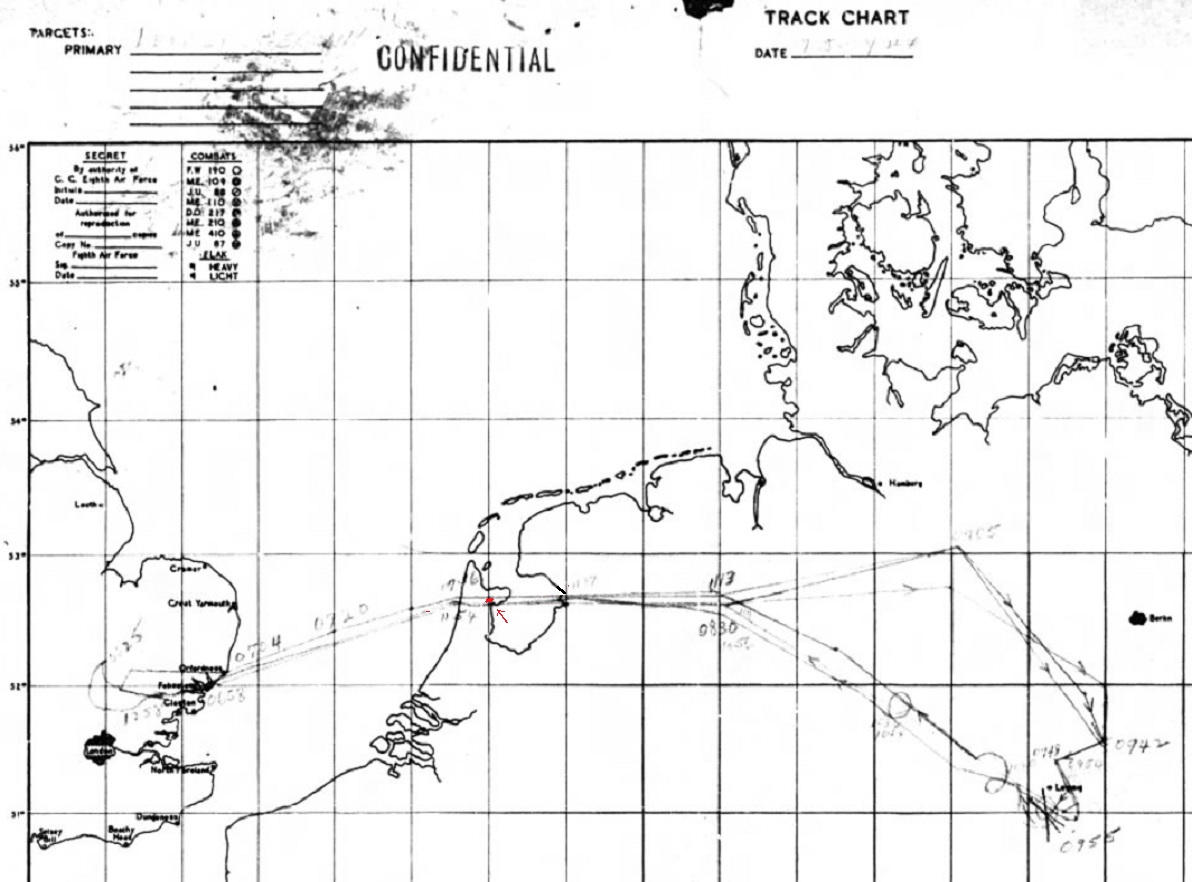
Below. Lt. Larue F. Cribb's '97983' came down in pieces at hamlet Keern at farm 'De Gare Goedsbogert', address Keern no. 217. In the cabbage fields between Keern and the road to Den Oever (today highway A7, north of today's ice skating stadium, Roskam street). Lt. Lawrence J. Gregor's aircraft '107070' fell on the Western outskirts of Hoorn, on the lawns of Westersingel and Pelmolen street. Close to the entrance of the shopping streets, opposite to the new theater Schouwburg 'het Park'. Both bomb loads were not armed yet and all bombs went unexploded deep into the soft ground.
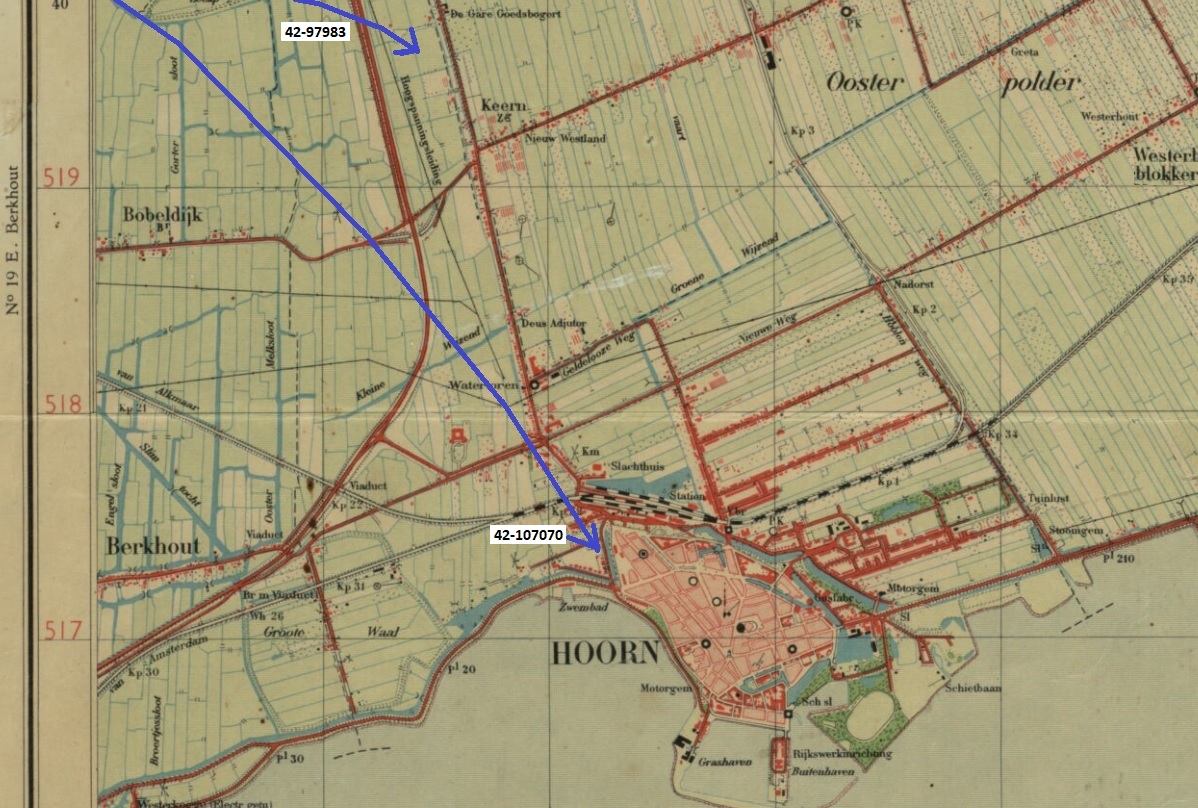
Tail section of Cribb's 42-97983 in the cabbage fields in front of farm 'De Gare Goedsbogert'.

These photographs were taken in the days after the Germans had removed all armament and equipment of interest and before the parts were transported away to be melted down for the German war machine. The local schoolboys are having the time of their life, searching for the best souvenirs. Note all are wearing wooden shoes.
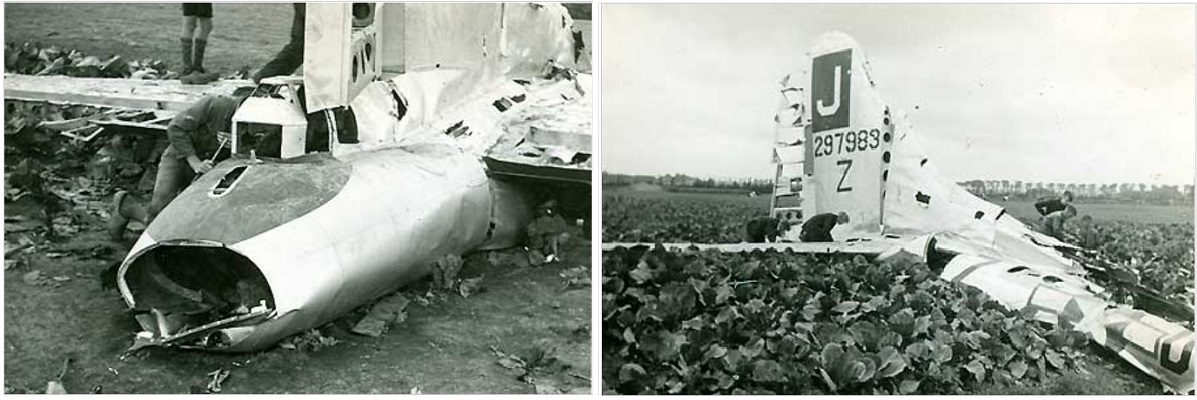
Photos Oud Hoorn Historical Society and copies in air war museums North Holland.
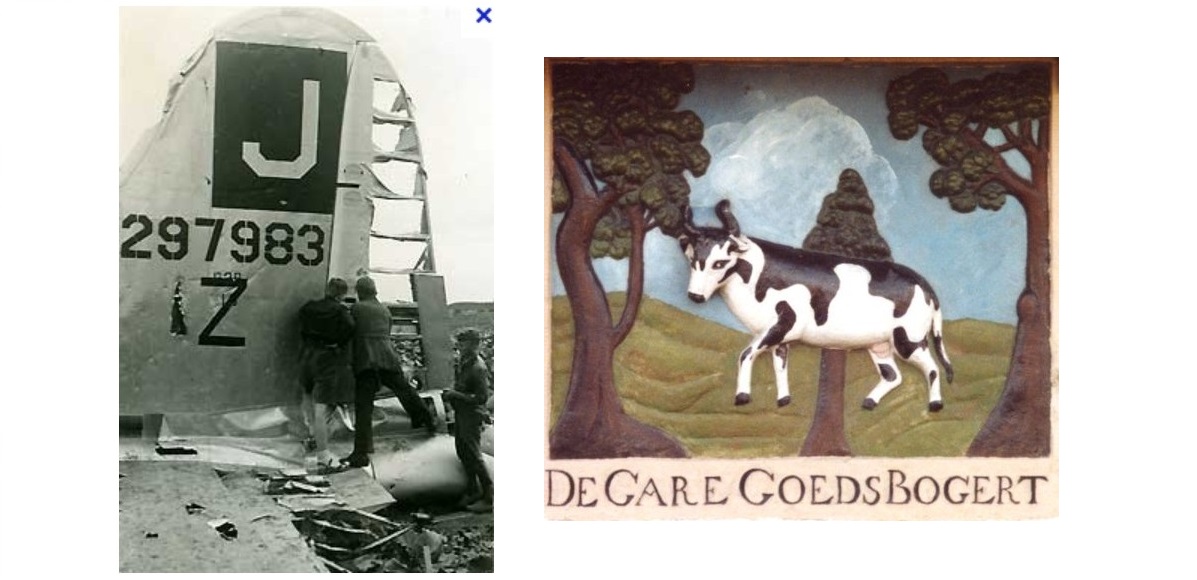
The five men killed of this crew were buried in Hoorn's city 'Keern' cemetery. Exhumed post war by a US Quartermaster Grave Recovery team and reburied in US War Cemetery "Netherlands" in Margraten. In the 1950 repatriation program, the remains of the co-pilot and TTG-Engineer were reburied in Missouri and New York.
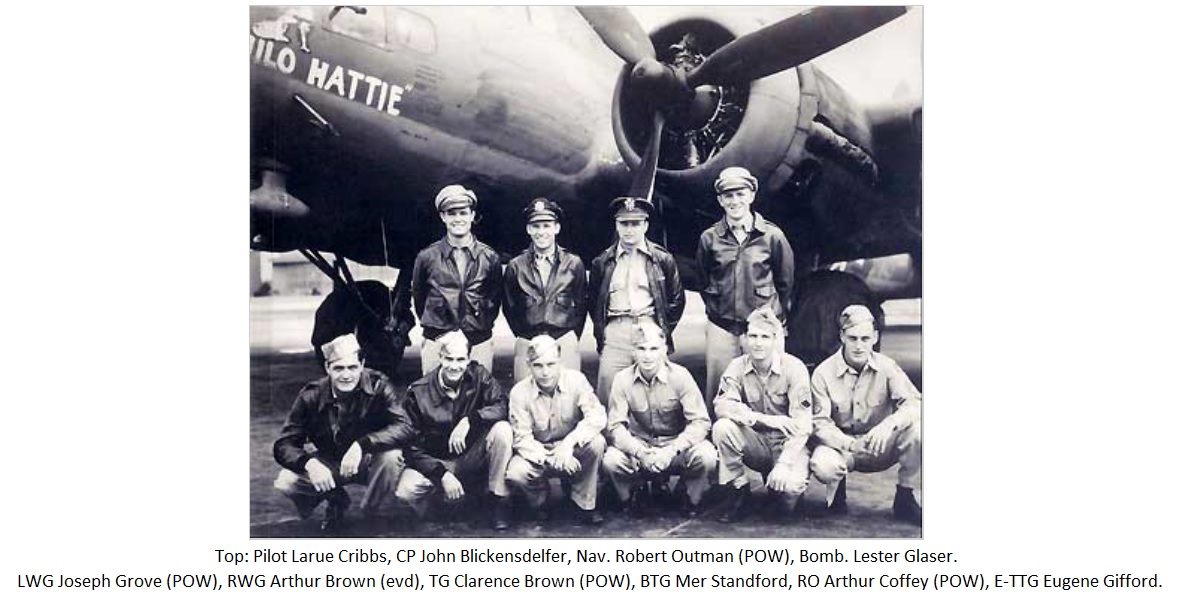
==================================
Right Waist Gunner S/Sgt. Arthur F. Brown (hometown Wakakoneta, Ohio) evaded back to Allied lines in Holland January 10th 1945.
Arthur Brown came down by parachute near Keern (see map above and at no. 1 on map below). "I landed 1 mile north of Hoorn, on the side of a road near a German training camp. I collapsed my chute and run into some bushes. A German soldier came down the road looking for me but did not see me". His colleague, the left waist gunner landed close. "I could see Sgt. Grove parachuting down in a field nearby, some Dutch and Germans waiting for him. After a while I went on for 200 yards or so (east), crossed a canal into an orchard and hid there in some carrots growing under the trees. I stayed there (the whole day) until dark. That night, trying to figure out where I was, eating some of the escape stuff from my escape-kit".
Next morning July 8. Arthur Brown thought he was on the East side of the Zuyder Sea (Lake IJsselmeer) in the North East Polder. He was affraid the Lake coastline was a German defense zone, so he decided to walk east to get away from it. In reality it was not defended because coastal defense of the Lake was positioned more north at closure dam Afsluitdike ("Causeway" on below map). AB: "I knew I was near the Zuiderzee but did not know which side of it I was on. I wanted to get out of the coastal defense zone so thought I could better walk east. After I while I came to a railroad" (running north-south, Hoorn to Medemblik, today a touristic railroad). "There was a lot of traffic on the roads, so I hid again in another orchard until dark and next morning".
July 9.
"I began to realize it was hard to walk across country in Holland as there are so many canals and dykes, so I decided to follow the railroad tracks south. My general idea was to get to Belgium and France, as we had been briefed and not to trust the Dutch underground and had been told that many Dutch civilians were hostile". In reality, Dutch underground was very reliable and most civilians helped Allied pilots, despite the death penalty when caught. In fact, an airman on the run had no chance reaching Belgium on his own, only with local help there was a chance of evading successfully. "I walked south and got to within a mile of Hoorn (1), where I came upon another railroad. I still thought I was east of the Zuiderzee, so I followed this railroad towards east". The railroad in direction to Wester-Blokker (Blokker), Hoogkarspel and Enkhuizen (no 3 map below). "For the third time I slept in an orchard. I was getting pretty hungry and began to realize it would take a long time to get to France at this rate...".
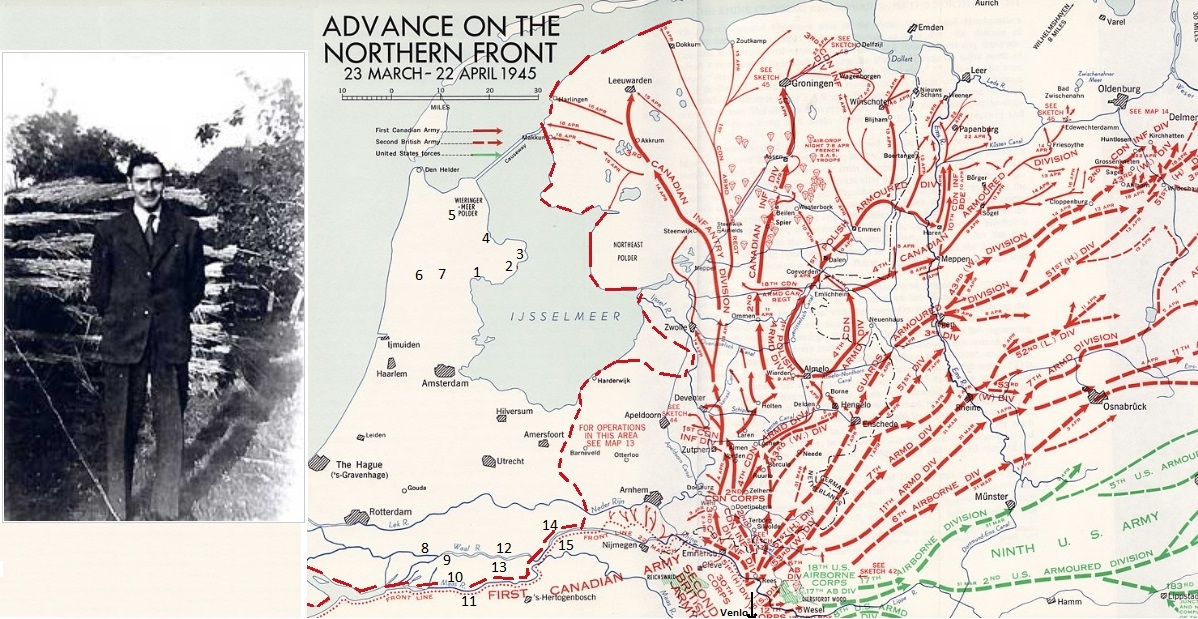
July 10.
"It was getting light. I reached some freight cars (railroad freight cars) on a side track. They were marked 'LEIPZIG". By coincidence the target of his raid on the 7th... "I figured I could jump on one and get a ride to the frontier and then get off. The doors were open and I climbed in without trouble. At about 10:00 hrs the train started. We stopped in next town named Hoogkarspel, near some docks on the canal and loaded some potatoes. I stayed there until 18:00 hrs, when the car I was in (which had not been loaded) was uncoupled. So I moved to the other part of the train. I got in a sort of uncovered cattle car. I took the label which told me where the car was going, but I did not know the name of this town. I had begun to think the train was going to Germany and was not sure I wanted to stay on it. I had just taken the hacksaw of my escape kit and was peeling some potatoes with it, when a man opened the door and looked in. He spoke to me. I held up my finger and said "Shh". He looked startled but went away at once. The train pulled out shortly after, taking me back where I had been that morning". Between Wester-Blokker and Hoogkarspel again. "The next time it slowed down I jumped out. I hid in some reeds by the track until it was dark".
July 11.
"My escape map was not much good for this district and I still did not know exactly where I was. For the first time I saw the sea early this morning and realized I must be west of the Zuiderzee. I hid again all that day, then walked on after dark. Two men on bicycles came by me and saw me. I ducked in the bushes and they went away after a few minutes. I started on again towards Hoorn (1), hoping to get from there to Amsterdam where I could get help. There were a lot of foxholes along the road and a lot of traffic". The foxholes were man-holes, dug every 30 meter on each side of the road for a person to take cover in case of an Allied strafing of the (German) transport on the road. The Germans had ordered these foxholes by forced labor. "I walked until 04:00 hrs in the morning, then hid in a haystack, where I slept the all next day.
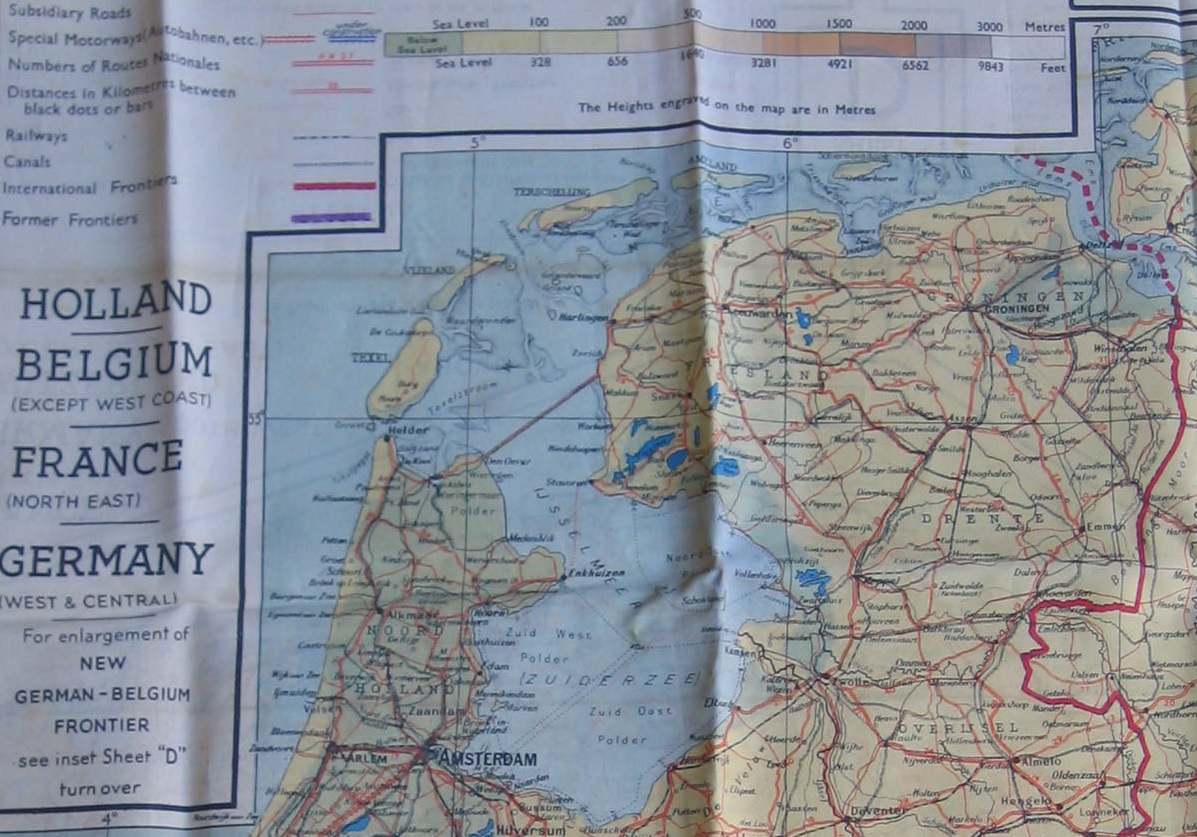
July 12.
"In the evening a man found me. He was working in the field and started to pitch the hay where I was lying. I made him understand I was an American, but he was afraid to help me. He pointed out on the map where I was, then went away. I decided I had better move on. I sneaked down the road for a mile or so, crossed it, and hid in another haystack, where I slept again until the next day".
July 13. Farm Commandeur Family, Venhuizen. De Hout.
"About 08:30 hrs children who were playing there found me". The children: "we found a man in grey uniform who was pretending to be asleep. He walked away saying he had to work". AB: "One of the children ran off yelling and brought back an older man". This was farmer and father Thames Commandeur. Arthur Brown went to hide in the field, but the man spotted him. AB: "I motioned to his house and walked over to it. He let me go in but looked scared". Thames Commandeur had already to two persons hiding underground in his farm. He had a number of small children and his wife died two years before. Next to that his farm was regular used by the resistance to hide weapon-containers that were dropped by air by the British SOE squadrons.
Steffie Tikotin.
One of the persons hiding in the Commandeur farm, was Jewish girl Steffi Tikotin. She was just as old as the farmer's childeren and had become one of the family. Steffi had fled to Holland from Dresden (Germany) with her father and mother after the Kristalnacht 9 November 1938. In 1942 they were in Nazi-occupied Amsterdam (on the premises of the Fokker aircraft factory in Amsterdam-north). It became clear deportation to 'work camps' was eminent. Steffi's father asked her to take off her yellow Jew star and travel by tram (forbidden for Jews) to resistance people who could help her further. This was the last time see saw her parents. First Steffi stayed a year in the attic of a house in Berkhout near Hoorn, but a razzia was planned and a policeman tipped them to leave. Her next stay was on the Commandeur farm. Post war Steffi married, name Steffi Robertson-Tikotin.
Arthur Brown when first in the farm: "I let them shut the door. Took out my phrase card (a card from the escape kit with translated sentences) and told them I needed help. I said I was an American aviator. The farmer said "Ja, ja, Chicago piano". He went out and got a girl who was staying (hidden) in the house. She spoke some English and was able to arrange for me to get in contact with the Dutch underground". Resistance man Freek Luider from Venhuizen provided Brown with civilian clothes, food stamps and an ID-card with trade def & dumb watch maker. The children: "Later he told us his name was Arthur Brown and he had parachuted out a B-17 bomber near Hoorn. He fed himself with what he could find in orchards, gardens and lived on concentrated food from his escape kit. He had tablets to purify water (Halazone). One day a German car with soldiers stopped on the road in front of the farm gate. Steffi and Arthur Brown were enjoying some sunshine behind the hayshed. Father Commandeur could only just warn them to go in their underground hide-out under the haystack, but the Germans drove on.
With the resistance.
Brown left the Commandeur farm in Venhuizen (2) at some point. He was brought by courier Ms. Kokkie Wittebrood to Alkmaar and was for two months with 'Mr. Wim', leader of the resistance in Alkmaar (6). Also he was in hiding with Mr. Piet Koning, farmer near Alkmaar (Stomptoren, later executed). Gradually Arthur became a member of the resistance. They were active in the wide area and often the armed groups stayed overnight in a remote safehouse or farm. Arthur Brown gave weapon-instruction lessons and also participated in the weapon droppings. Guns were dropped in containers by the British RAF at night on fields that lay at least 6 miles from German control posts.

Arthur Brown in the Battle of Rustenburg, 10 October 1944.
In the night of 10 October 1944 a parachute drop of weapon containers was expected in a field east of Alkmaar at Spierdijk, in the Wogmeer Polder, a new location codenamed LOBSTER. It was bad weather, clouded. They heard the aircraft circle over twice, but apparently the pilot did not trust the light signals or something else was not in order, which proved to be correct later. The aircraft flew on without dropping. That night, Arthur Brown was part of the transport-team that had to take the assembled weapon containers out the polder by truck. Unaware that the dropping failed, they were on their way on the road from Stompetoren to Rustenburg, heading for Lobster.
On the Ford flat bed truck were 9 men: in the cabin the driver and next to him the leader of the transport-crew, Gerard Veldman. Outside, standing behind and leaning on the cabin roof were two men with their stenguns ready to fire. On the loading deck under a tarp, lay Arthur Brown and four others, all five armed with stens. At the Rustenburg bridge (below) no less then 7 roads come together. As often, the bridge was guarded, but this night by no less then 20 'Landwachters', Dutch Nazi-collaborators, armed with outdated carabines and hunting rifles. The high number of Landwachters suggest that the weapon drop was betrayed, but there were almost no German forces around. This suggest the Landwachters were doing a big night control on whatever would pass the crossroads and bridge.
Photo below. Rustenburg bridge.
The Ford truck came up this road towards the bridge and was halted just before it. It was pitch dark and the resistance men in the truck smelled trouble, but the engine of the truck refused to re-start for a getaway. Dark figures approached the truck. The two men over the cabin opened fire with their stenguns. The landwachters returned fire. All jumped from the truck to find cover on the sides of the road, shooting as they went. Of the Landwachters three were killed, four severely wounded, one wounded. In Arthur Brown's 1945 Escape & Evasion file is something you do not see very often; after the typed standard question "Did you kill any Germans in escaping?" is handwritten "YES".
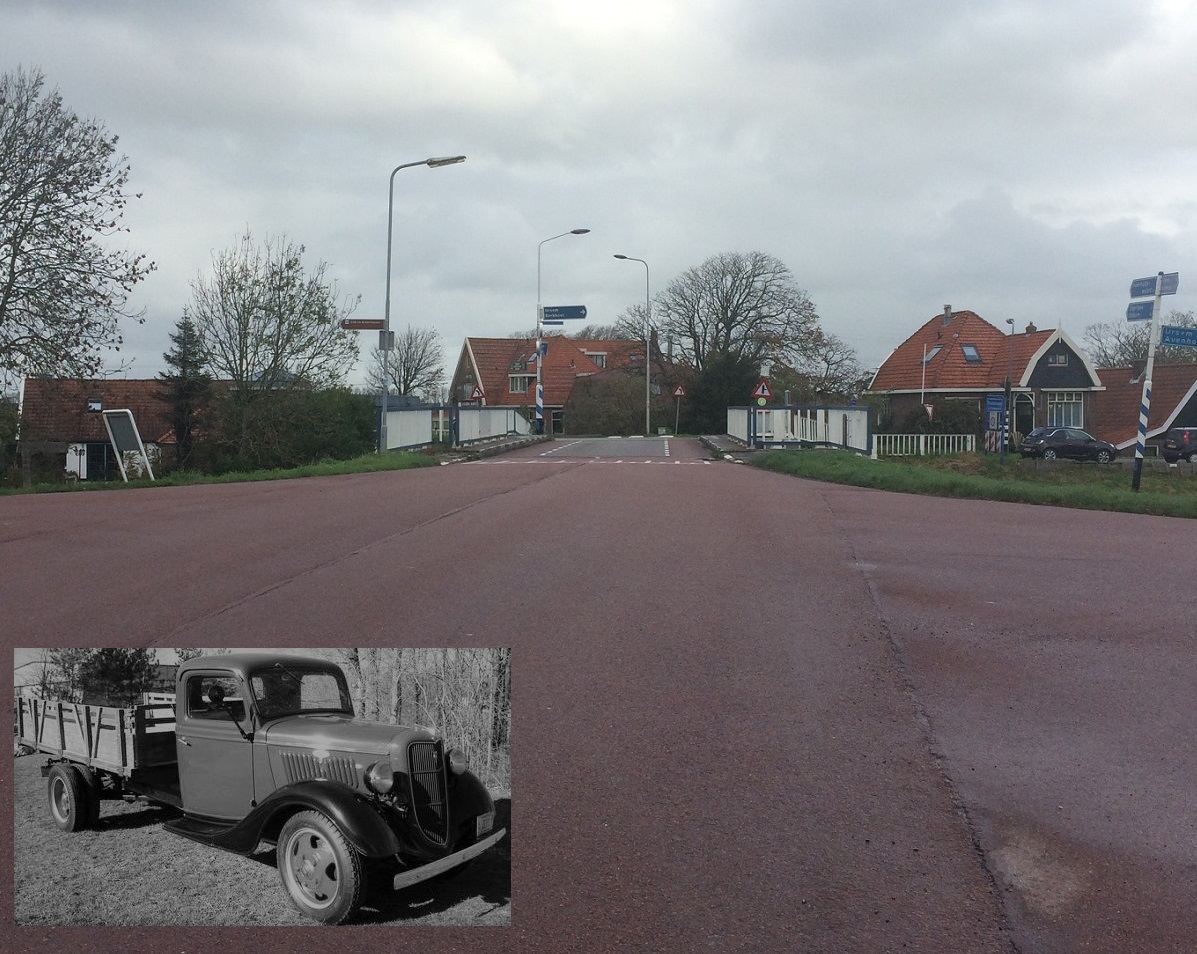
Bomber jacket.
In the weeks before, Arthur Brown had given his USAAF bomber jacket to his leader Gerard Veldman. This jacket was a bit shiny and light of color, even in darkness. When Veldman in the jacket jumped from the cabin, it drew fire. He was hit by a bullet in the head and died on the road. Another resistance man lay wounded on the side in the reeds and was found by the Germans next morning (later executed).
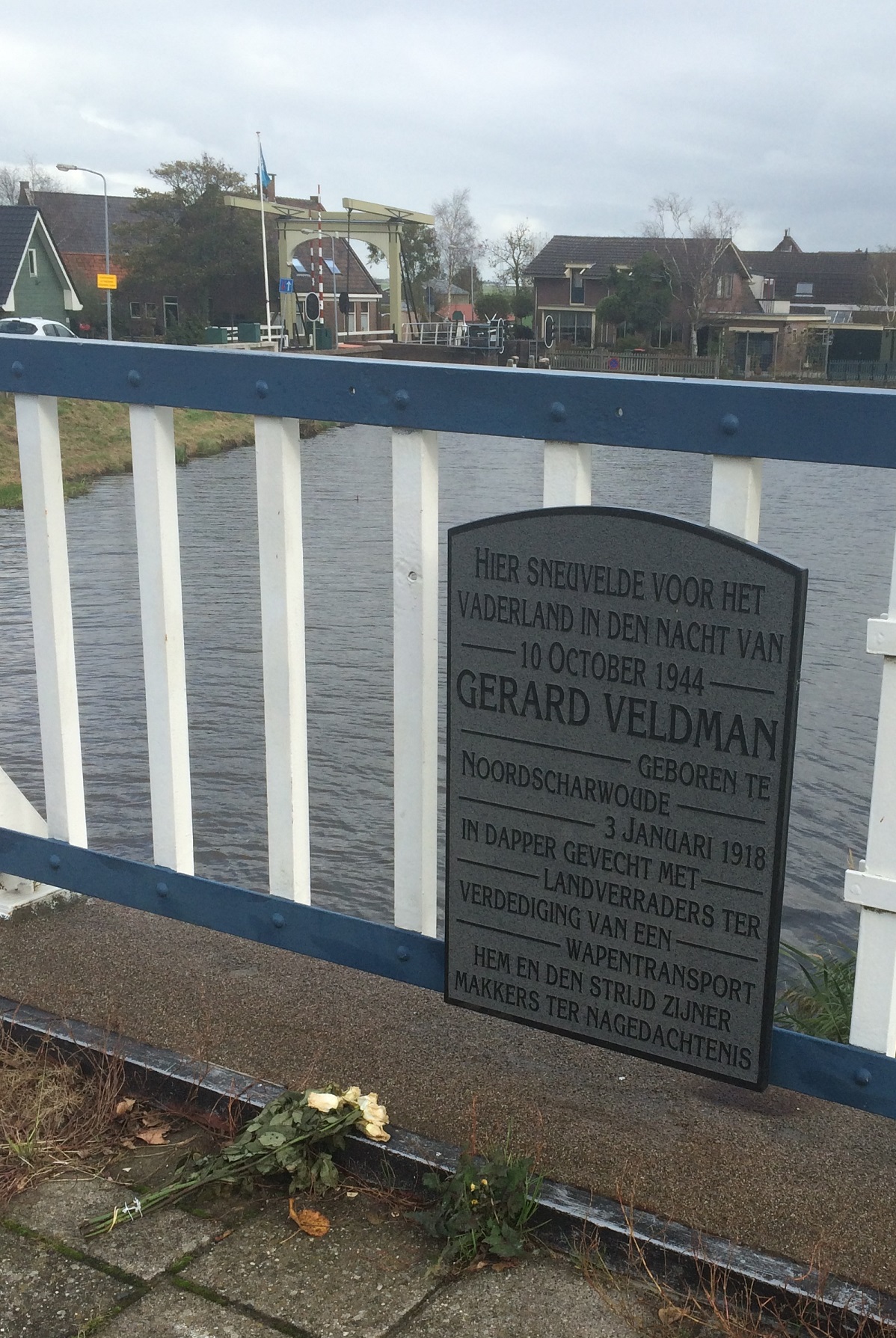
.
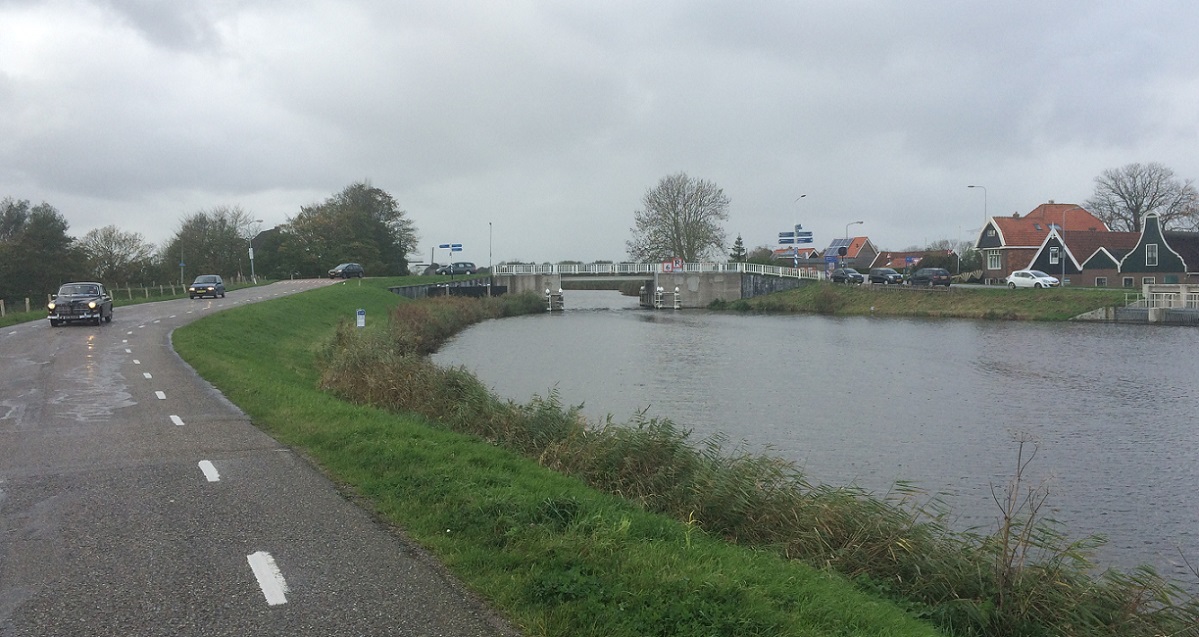
.
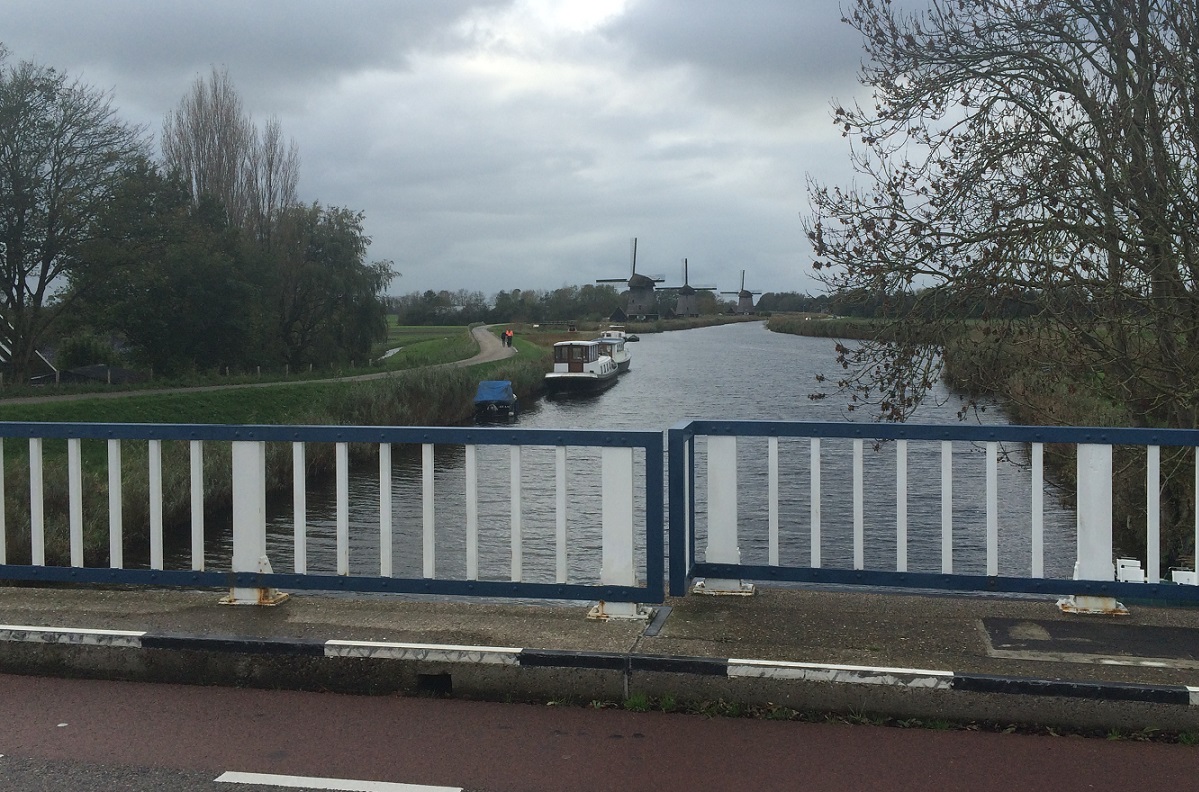
11 October - January 5, 1945.
After the shooting, Arthur Brown crawled away from the bridge. During the rest of night he crossed through fields and canals to get as far away from the scene as possible. Early in the morning he recognized a lonely house we had been before with the resistance, a safe location. When he entered, one man of the truck was there as well. All were quite surprised to see Brown, for his knowledge of the area was limited, still he made it. Others had found rescue in farm Houtlust, but traces led to this farm and next morning a group of 150 Germans surrounded it and burned it to the ground. Trying to escape the fire, a number of hidden men were shot dead. In total 13 resistance fighters lost their live in the shooting at the Rustenburg bridge and its aftermath.
Wieringermeer.
The wide area of Rustenburg stayed a drop zone for weapons for the remaining 6 months of the war. At least 150 tonnes of material was parachuted down. Destination of the weapons was mostly Amsterdam. Leaders of Brown's group learned that road transport had become too dangerous. Decided was to revert to transport by boat, in the same fashion as vegetables from the fields were brought by farmers via canals to the central auction buildings. Small boats were loaded with weapons and topped with vegetables and crops. As an extra precaution, the boats did not went south to Amsterdam, but north to the Wieringermeer Polder (5 on above map). There the guns were assembled in barges that sailed to Amsterdam.
Arthur Brown's new job was to receive and handle the weapons in the Wieringermeer Polder (5). According to his interview report, he stayed in this period on the farm of Mr. Kinebra in Middenmeer for a month. And three weeks with farmer 'Nieuhouser' in Middenmeer. Also each a week with farmers Schanke and Dieleman in Middenmeer.
Crossing the front line.
Mid December 1944 Brown requested to try to reach Allied lines in the South of Holland. This was granted. He was December 25 1944 in Medemblik (4). Mr. P.C. van Rijn with address Drieboomlaan 318 in Hoorn (1) took Brown to Amsterdam. From there, with false papers, he was escorted in a train journey south to probably Rotterdam. Moving from safehouse to safehouse he reached Hardinxveld and became a 'Biesbos-crosser'. Via Werkendam and Dussen/Muilkerk on 4 January 1945 he crossed the frontline river and reached Allied held territory at Sprang-Kapelle on 5 January 1945. A week later, Brown was returned to England.
Read more:
-The other B-17 (42-107070 Gregor) in the Hoorn-collision: http://www.zzairwar.nl/dossiers/159.html
-Hoorn War Graves 1945: http://www.zzairwar.nl/dossiers/942.html
-Grave Arthur Brown: https://www.findagrave.com/cgi-bin/fg.cgi?page=pv&GRid=26843689&PIpi=52919782
.
© ZZairwar (Zuyder Zee Air War)
.